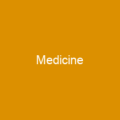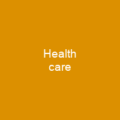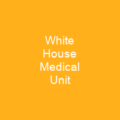Understanding End-of-Life Care: A Comprehensive Guide
End-of-life care (EOLC) is a complex yet crucial aspect of healthcare that focuses on providing comfort and support to individuals in their final days. It’s not just about medical treatment; it encompasses physical, emotional, spiritual, and practical needs.
The Importance of End-of-Life Care
Imagine walking through the twilight of life, where every moment counts. EOLC is like a lighthouse in this journey, guiding both patients and their loved ones towards peace and dignity. It’s about ensuring that the last chapters of someone’s story are written with care and respect for their wishes and values.
Who Provides End-of-Life Care?
EOLC is a collaborative effort involving various professionals. Family members, nurses, social workers, physicians, and other support staff work together to create a supportive environment. Each plays a vital role in ensuring that the patient’s needs are met holistically.
Medical Considerations
The financial burden of EOLC is significant. About 10% of total medical spending goes towards people in their last year of life, rising to up to 25% for those with a shorter timeline. This highlights the importance of advanced care planning and ensuring that resources are used effectively.
Advanced Care Planning: Honoring Personal Values
Advanced care planning is like laying down a roadmap for your final journey. It involves ongoing discussions with doctors to record preferences in advance healthcare directives, ensuring that medical treatment aligns with personal values and life goals.
End-of-Life Care Conversations: A Dialogue of Hope
These conversations are not just about discussing the end; they’re about living fully until the very last breath. They involve specifying goals of care, individualized treatment planning, and prioritizing symptom management to avoid suffering.
Signs of Dying: Recognizing the End
The signs of dying can be subtle but significant. From drowsiness and confusion to changes in breathing patterns, recognizing these signs early can help prepare for the final moments with dignity and comfort.
Symptom Management: Ensuring Comfort Until the Very Last Breath
Managing symptoms is crucial during end-of-life care. Pain, agitation, respiratory secretions, nausea, vomiting, dyspnea, and constipation are common issues that need to be addressed with appropriate medications and interventions.
Home-Based End-of-Life Care: A Growing Trend
The trend towards home-based end-of-life care is increasing. More people prefer to spend their final days in familiar surroundings, surrounded by loved ones who can provide comfort and support.
Disparities in End-of-Life Care: Ensuring Fair Access for All
However, disparities exist. Unequal access to care among different groups is a significant issue, with minority patients often receiving inadequate end-of-life care due to individual discrimination and cultural insensitivity.
Non-Medical Aspects: The Human Touch in End-of-Life Care
The non-medical aspects of EOLC are equally important. Family members’ experiences, spirituality, and the role of palliative care teams all contribute to a holistic approach that respects the patient’s wishes.
Global Perspectives: Lessons from Other Countries
Looking at global practices can provide valuable insights. The UK, for example, has comprehensive national policies and integrated palliative care services, ranking highest in end-of-life care globally. Belgium also established a strong framework for palliative care, with coordinated networks and support teams providing home-based care.
The Future of End-of-Life Care: A Call to Action
To improve end-of-life care, we need to address disparities, enhance electronic patient records, and provide named professionals to support patients and carers. The goal is to ensure that everyone has access to fair, comfortable, and informed conversations about their final days.

End-of-life care is a journey that requires compassion, understanding, and respect. By embracing advanced care planning, recognizing the signs of dying, managing symptoms effectively, and ensuring fair access for all, we can make this final chapter as peaceful and dignified as possible.
You want to know more about End-of-life care?
This page is based on the article End-of-life care published in Wikipedia (retrieved on November 29, 2024) and was automatically summarized using artificial intelligence.







